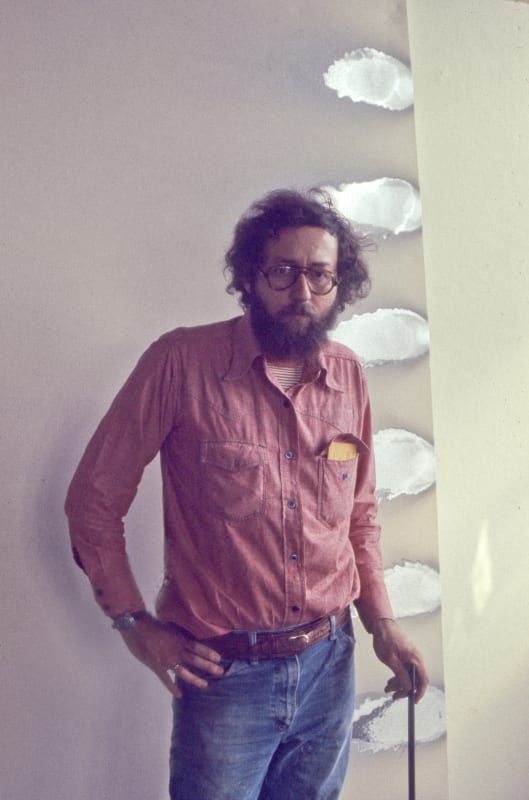Michael Venezia in conversation with Philipp Hindahl
Michael Venezia has been at the center of twentieth century avant-garde, and yet he remains on its margins. At age eighty-three, the painter is still at work, as he has been for the past six decades. Speaking about his latest series of works, he explains why he has never abandoned painting like so many of his contemporaries and why painting is so obsessed with gesture.
“Nothing happened,” recalls Michael Venezia without disappointment, when he speaks about his time in London—where in 1965 the young painter, then in his early thirties, held a teaching position and had his first gallery. But, things were happening around Venezia. During that same period, the artist Gustav Metzger organized the Destruction in Art Symposium. Traditional notions of media dissolved, the arts became process-based. A term for the movement was quickly found: Fluxus. Performance and video claimed their space in the galleries, as the social upheaval of the 1960s strove to make all that was solid melt into air.
Painting, however, did not vanish; it just reacted to the challenges from other media and underwent rapid changes. Venezia came of age in New York, knew all the Abstract Expressionists. He was part of the nucleus of the movements that looked for the relevance of painting in post-war America. But, he later confesses to prefer the periphery.
It’s also not quite true that nothing happened for Venezia in later decades. He developed his stripe paintings in London, an idea he took from air-mail envelopes. He expanded on an idea of paintings as akin to tapestry borders— that a painting could be smaller than the surface it was on—a notion he took from Japanese scroll painting. Back in New York, he worked with spray cans on paper, prefiguring a process that would be popularized ten years later.
[...]
Read the full article and interview with the artist here
Text: Excerpt of the article available on Mousse Magazine online

